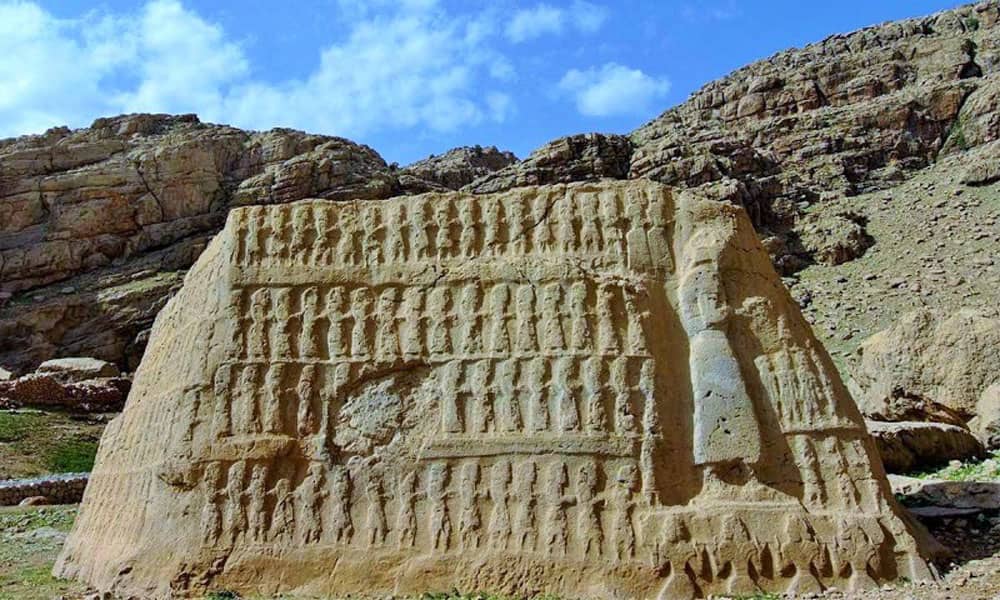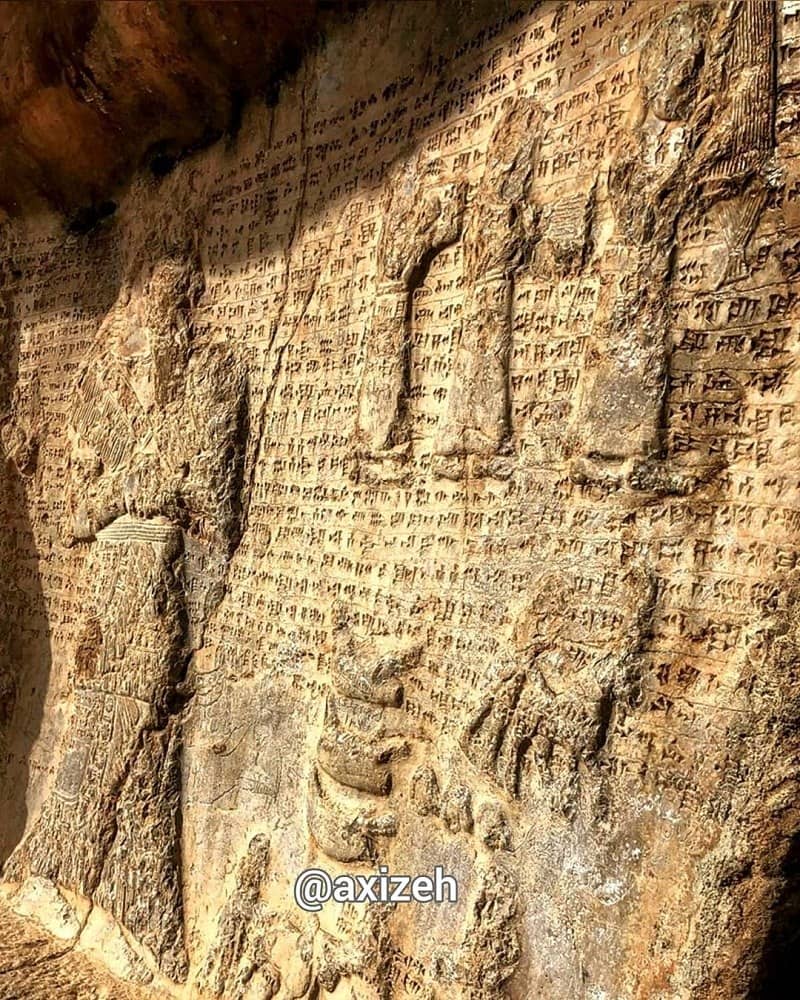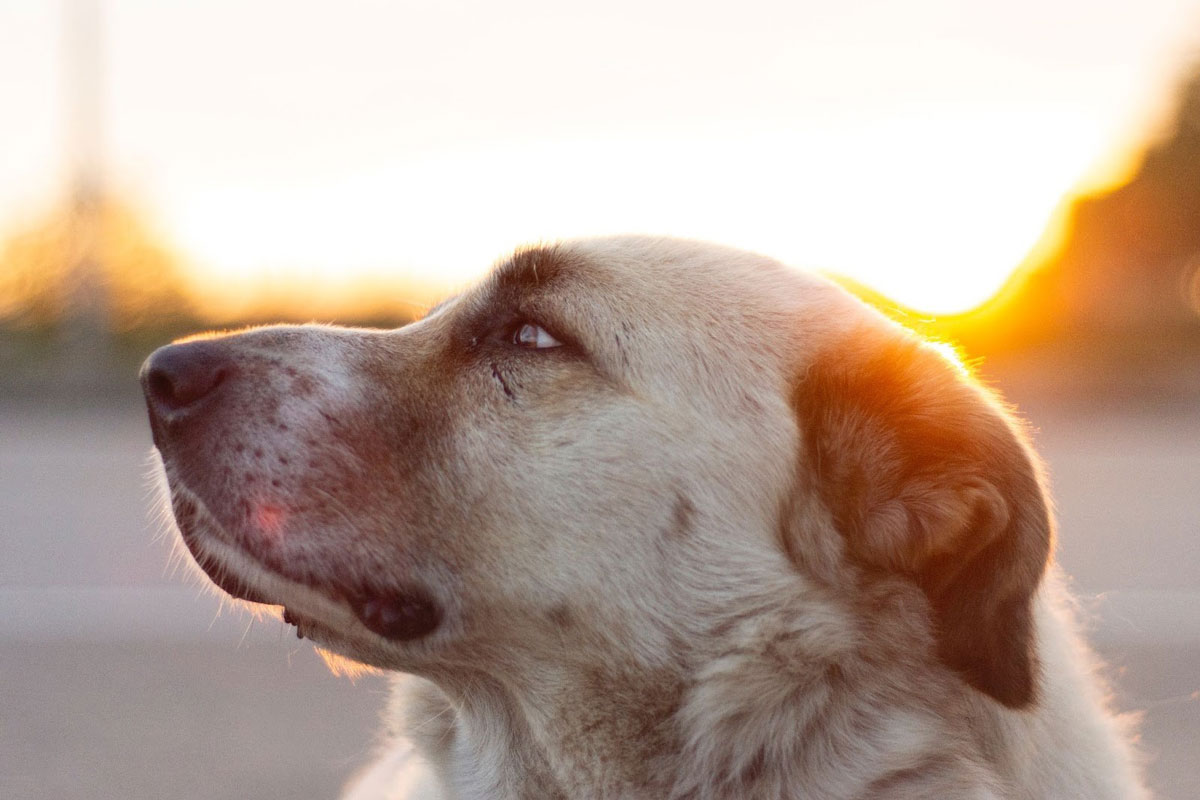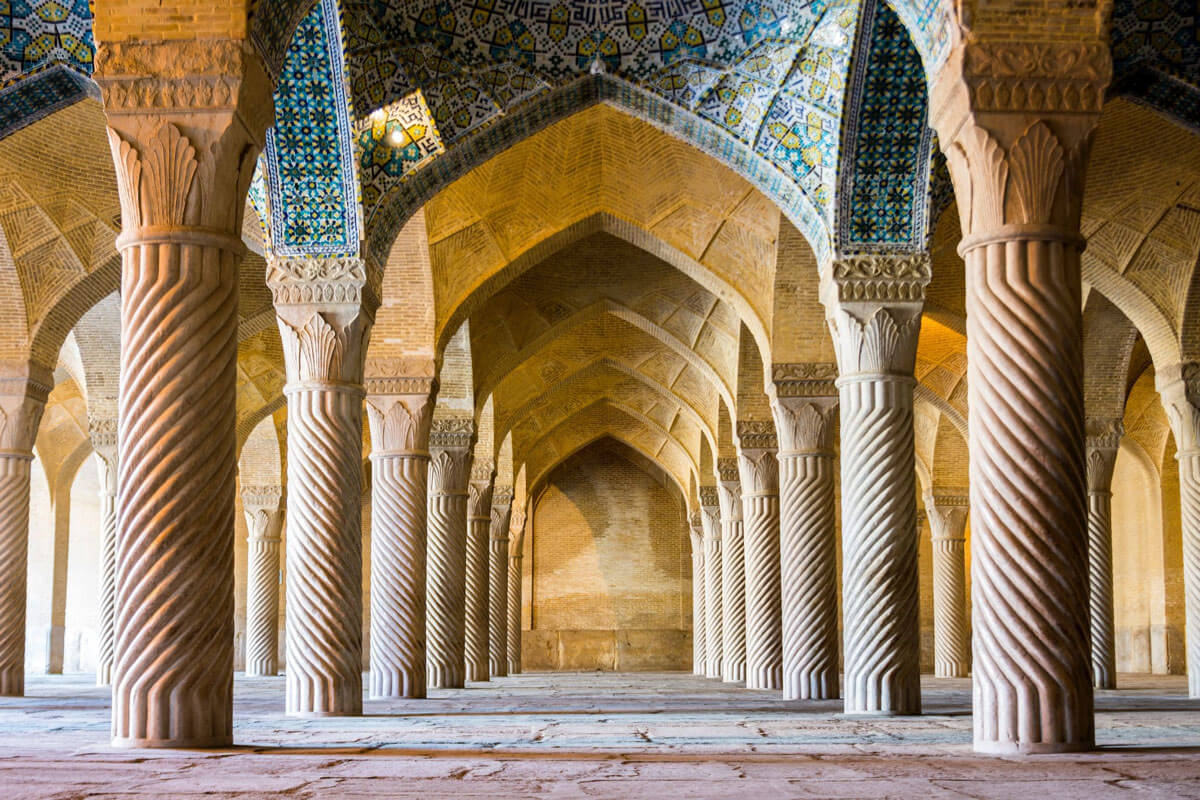
Izeh city is a County Capital in Khuzestan province, located in the mountain region. This city is home to many historical monuments and natural attractions. As it is in the mountain region, where various rock reliefs can be found in the city. An area in Izeh called Kul-e Farah (Kul Farah or Koolfarah) contains a large number of these rock reliefs. Kul-e-Farah Inscriptions show the prayer ceremony and sacrifice rituals of Elamite kings.
The village of Kul-e-Farah in Izeh, or the village of Kohbad in region 2, is part of the properties of Farz Ali Vand from the Aali Mahmoudi clan. The rock reliefs in this area date back to the Elamite civilization. This period started in the third millennium BC (from 2000 to 3000 BC).
Characteristics of Kul-e-Farah Inscriptions & Area
Kul-e-Farah village is located in a mountain valley 7 kilometers northeast of Izeh, at the end of the Izeh plain. There are 6 inscriptions from the Elamite period in this area. Based on the stone inscriptions, graves and ruins, we know today that this area was the shrine of Narsina. Narsina is one of the deities of the Elamite civilization.
The ancient hills of Perchestan and Choghakare, as well as the Miangaran wetland. The stones detaching from the hills roll to the bottom of the valleys or down the hill. In the past, people used these stones as a canvas to paint their feelings and emotions. Being located in the valley, the Kul-e-Farah area is filled with such stones from the hills.
Kul-e-Farah Inscriptions in Izeh

There are six significant inscriptions in the area described here:
The First Rock Relief
This inscription is carved on a stone measuring 1.70 cm in 1 meter. The figures on the stone display the ritual of sacrificing Ayapir, one of the rulers of the Elamite civilization. This rock relief is placed 6 km above the foothills.
The Second Rock relief
This inscription is created on a trilliant stone slab. On the stone, there is a person in the middle sitting in prayer, raising his hand in front of his face. On his left, 4 people are standing, accompanying him courteously. Even though Elamite garments covered their ankles, this person’s garments ended above the knees.
A sacrifice ritual is carved in front of the individual standing in the middle. Someone is holding a bull on its back while several other sacrifices are laid on the ground.
The Third Rock Relief
This inscription is carved on a square stone measuring 2.8 meters on each side. The stone figures display the transportation ceremony of a statue representing an Elamite deity. Four men carry the statue, and following them is the ruler, accompanied by several servants.
People are displayed in orderly queues in three corners of the inscriptions. The sacrifice ritual is depicted on the fourth (eastern) side. Also, the figures of 7 small men are carved in this rock relief. Since these seven men carved on this rock relief in Kul-e-Farah are displayed without clothing, they are most likely prisoners of war.
The Fourth Rock Relief
The figures on this rock relief show a gift-giving ritual for the ruler. The ruler is sitting on the throne, and there are 3 tables in front of him. There are gifts atop one of them.
On the other side, several people are standing courteously in four rows. They hold one hand in front of their face and the other hand forward as a sign of respect.
The Fifth Rock relief
In this figure, an Elamite person performs a religious ceremony in front of a brazier. There are also figures of sacrificed animals laid in front of him.
The Sixth Rock relief
This image is similar to image No.3 of carrying the gods by 4 men. These people wearing hats are lifting the statue.
Do Not Miss Visiting This Attraction
Izeh city is one of the most beautiful cities in Khuzestan province, where various rock reliefs are found in different places. Kul-e-Farah Inscriptions and the area surrounding it in Izeh is a very spacious area and the stone inscriptions are a remnant of its rich history.
If you travel to Khuzestan on Iran tour packages or independently, don’t forget to visit Kul-e-Farah village. Read more about it on “Ahvaz tourist attractions”, where you will find other sights around this city and Izeh. Destination Iran invites you to visit the breathtaking natural attractions of Kul-e-Farah Inscriptions and the surrounding.
Where is the Kul-e-Farah Inscription Site located?
Kul-e-Farah is located near a village of the same name in Izeh city, Khuzestan province. You can see the exact location of this area on the map below:
Frequently Asked Questions about Kul-e-Farah Inscriptions
If you do not find the answer to your questions below, share your questions with us through the comments section of this post. We will respond as soon as we can.
What does Kul-e-Farah mean?
Kul-e-Farah or Kull Farah is a combination of the two words “Kul” meaning valley and “Farah” meaning happiness. The valley is wide and rich with natural beauty; Unlike other valleys that are often narrow and devoid of life. For this reason, this area is called Kul-e-Farah.
In which historical period were Kul-e-Farah inscriptions carved, and how many inscriptions are there?
The historical site dates back to the Elamite period, there are 6 inscriptions or rock reliefs in different sizes and patterns.
How old are the rock reliefs in Kul-e-Farah?
The rock reliefs in this area date back to the third millennium BC, roughly between 2,000 to 3,000 BC.
What were Kul-e-Farah Inscriptions used for in the past?
Remnants of structures, graves, and rock reliefs suggest that this area was a place of worship for Narsina, one of the Elamite deities.













